As the world keeps moving toward becoming mobile-first, businesses are scrambling to rework their digital strategies in order to stay relevant inside a mobile-driven marketplace.
Perhaps one of the greatest changes is related to the rise of mobile search, transforming not only how users interact with search engines but also how advertisers approach online advertising.
As one of the most robust digital marketing channels, Google Ads continues to undergo rapid changes and adapt to the demands of a mobile-first world.
This article covers the ways in which mobile search now shapes the future of Google Ads and why having a mobile-first strategy is no longer a nicety but a necessity if any business wishes to compete.
In this day and age of mobile-first, more and more users are turning toward using their smartphones to access information, make purchases, and consume web content.
With this shift toward mobile search, businesses should feel confident that their Google Ads strategies have been reconsidered for mobile users.
This trend in the growth of mobile search, powered by Google Ads, enables opportunities to reach and really engage with an ever-growing audience.
- Evolution of Mobile Search: A Google Ads Perspective
- Why a Mobile-First Approach Matters in Google Ads Campaigns
- Optimizing Google Ads for Mobile Search
- AI and Automation: Role in Mobile Search Ads
- Future Trends in Mobile Search and Google Ads
- Overview of Future of Mobile Search and Google Ads
- Frequently Asked Questions About Mobile Search and Google Ads
Evolution of Mobile Search: A Google Ads Perspective
Mobile search has dramatically changed the way people search for information online.
With the majority share of internet traffic already coming from mobile devices, Google Ads had to modernize its way of connecting businesses with users on the go.
The pace of evolution as far as mobile search is concerned has been fast, driven by advancements in technology and new consumer behavior trends.
It has been two decades, more or less, that this kind of mobile search has evolved from being a secondary consideration for most advertisers to the prime focus of advertising strategies.
Google Ads has introduced new ad formats, targeting options, and bidding strategies specifically oriented toward meeting the demands of this mobile-first world.
Understanding this evolution is crucial for businesses willing to leverage the opportunities presented by mobile search.

An illustration of the growing dominance of mobile search in the digital era.
The Rise of Mobile Search in the Digital Era
Mobile search really began to take flight as smartphones became more affordable and accessible.
With mobile devices always at arm’s length, users also began to rely on them for on-demand information, directions, and solutions to immediate needs.
This shift made it important for search engines, such as Google, to prioritize mobile search results and adjust algorithms around this new dominant form of search.
- Today, more than half of the world’s internet usage comes from mobile devices.
- Google introduced mobile-first indexing, prioritizing mobile-friendly content to rank higher.
- Businesses optimized their websites for mobile usability and faster loading times.
The growth of mobile search not only changed how people search but also how advertisers connect with their audience on Google Ads.
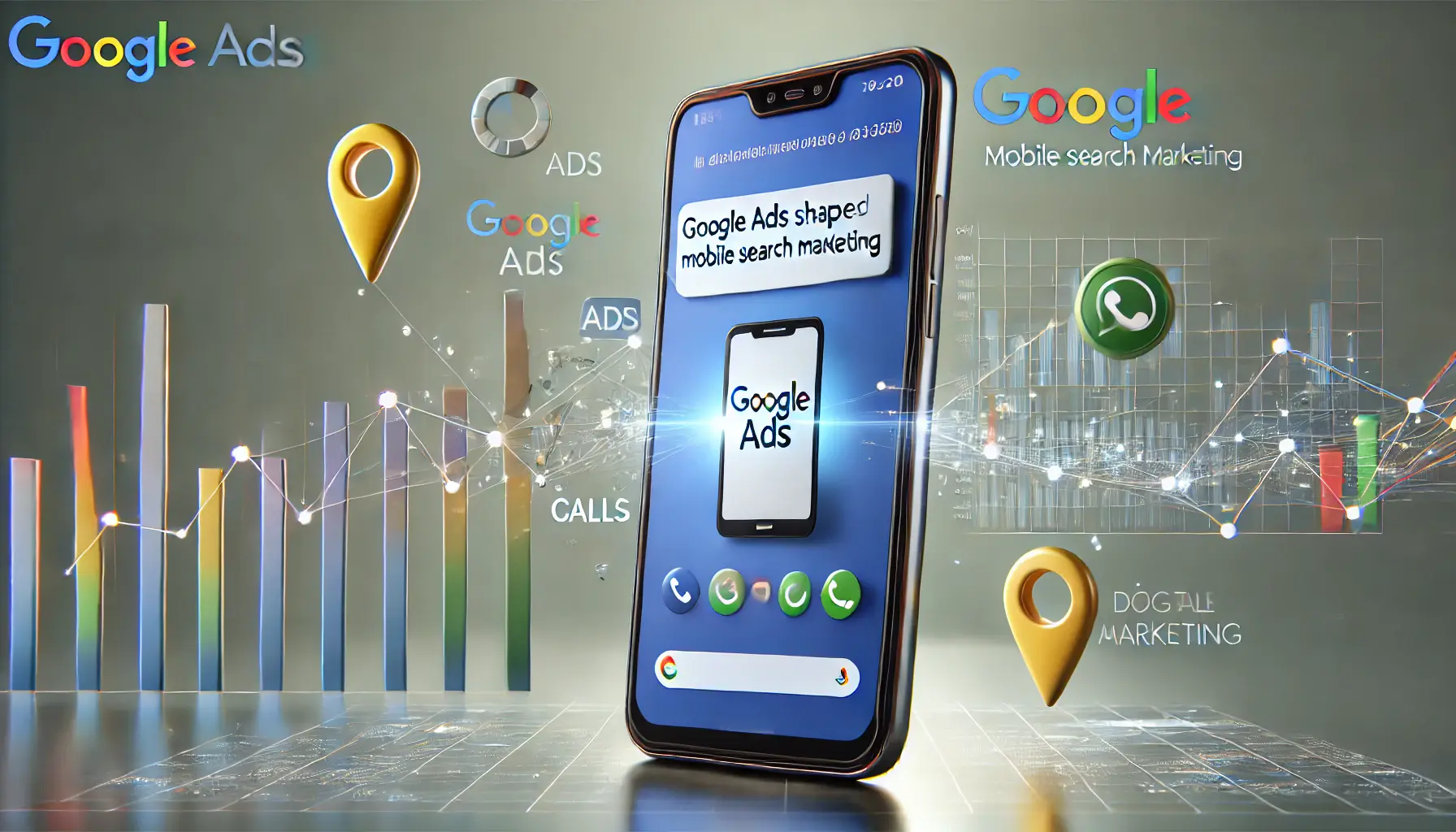
An illustration of how Google Ads influenced the evolution of mobile search marketing.
How Google Ads Shaped Mobile Search Marketing
Google Ads was one of the leading forces in developing mobile search marketing.
It introduced mobile-specific features such as call extensions, location targeting, and mobile-optimized ads that help businesses connect with users during key moments, often when they are ready to take action.
This has made mobile search advertising one of the most effective ways to reach potential customers in real time.
With Google’s push for the mobile-first indexing strategy, businesses focusing on mobile optimization gain a competitive advantage in search rankings.
Mobile-friendly websites and ad campaigns have become indispensable parts of successful digital marketing strategies, making Google Ads a must-have tool for mobile-first businesses.
Mobile search has revolutionized how users interact with ads. Embracing this change is crucial for marketers who want to stay ahead.
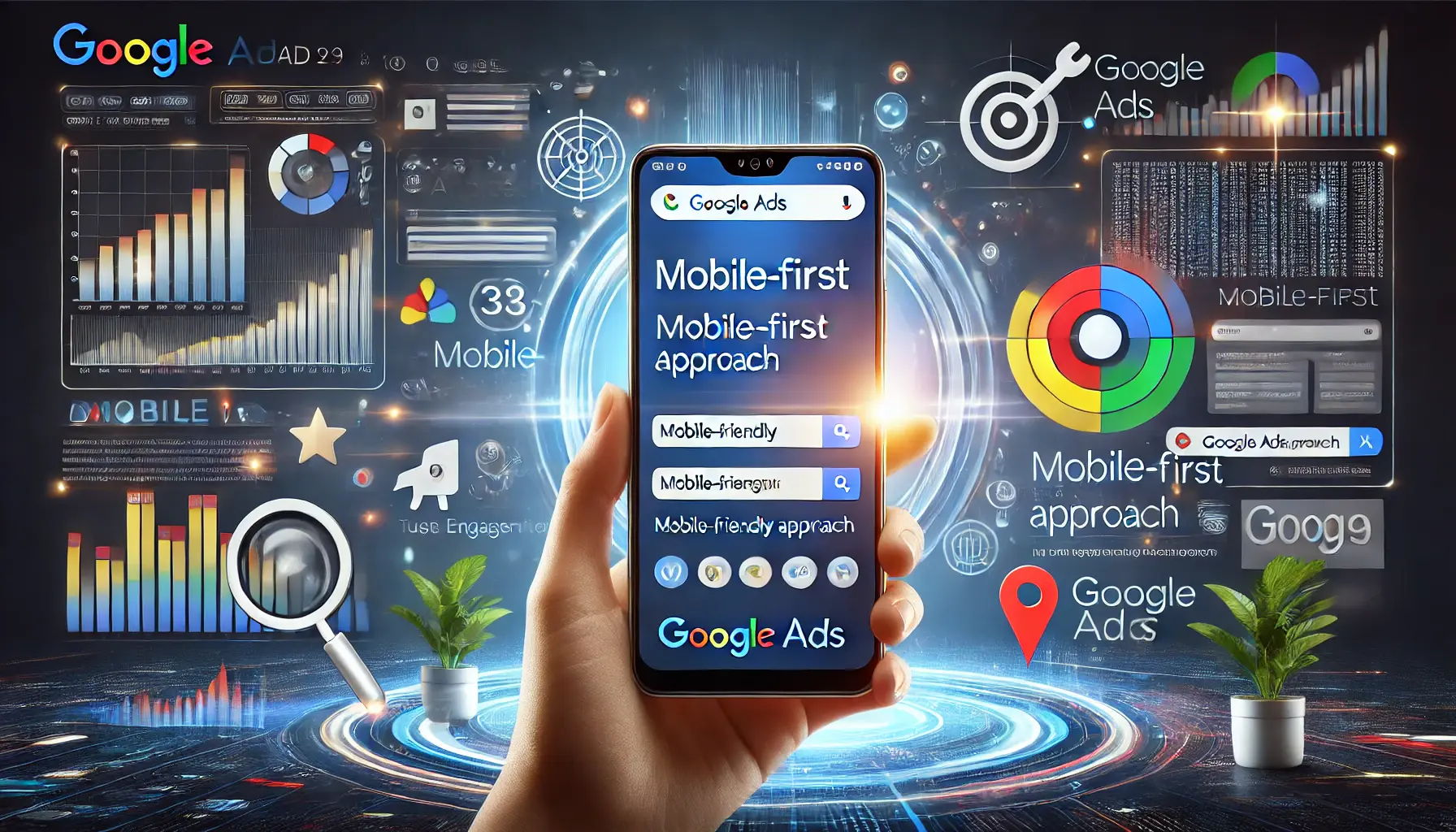
An illustration emphasizing the significance of a mobile-first strategy in Google Ads campaigns.
Why a Mobile-First Approach Matters in Google Ads Campaigns
In this day and age, taking a mobile-first approach is not an option but a necessity for success in any business that wishes to run successful Google Ads campaigns.
Since more than 60% of all global web traffic comes from mobile devices, advertisers should shape their efforts to target audiences using mobiles specifically.
Without a finely tuned mobile-first approach, a business stands to lose potential leads and conversions to competitors already poised for success by embracing this trend.
The mobile-first approach builds campaigns, websites, and ads for mobile users first and foremost, while ensuring a seamless experience regardless of the device used to access them.
As search continues to be truly mobile-first, advertisers need to adapt in order to meet users where they already are – on their smartphones.

An illustration depicting the concept of mobile-first indexing in search engine optimization.
Understanding Mobile-First Indexing
Google’s mobile-first indexing takes the mobile version of a website as the primary basis for ranking and indexing content.
Ensuring your site is optimized for mobile can prevent a significant drop in your site’s SERPSearch Engine Results Page, the page displayed by a search engine in response to a query. position and visibility.
For Google Ads campaigns, mobile landing pages and ad formats must render properly for optimal performance.
- Mobile-first indexing ensures your site is prioritized for Google search rankings.
- If your site isn’t optimized for mobile, you risk losing ranking positions on SERP and becoming less visible for ads.
- Enabling fast loading times along with a responsive design will maintain ad performance and user engagement.
This shift in traffic has forced businesses to focus heavily on mobile usability, which directly influences the success of their Google Ads campaigns.
Mobile-friendly landing pages now lead to higher ad quality scores, lower cost-per-click (CPCCost Per Click, the amount advertisers pay for each click on their ad.), and better overall performance in mobile search results.
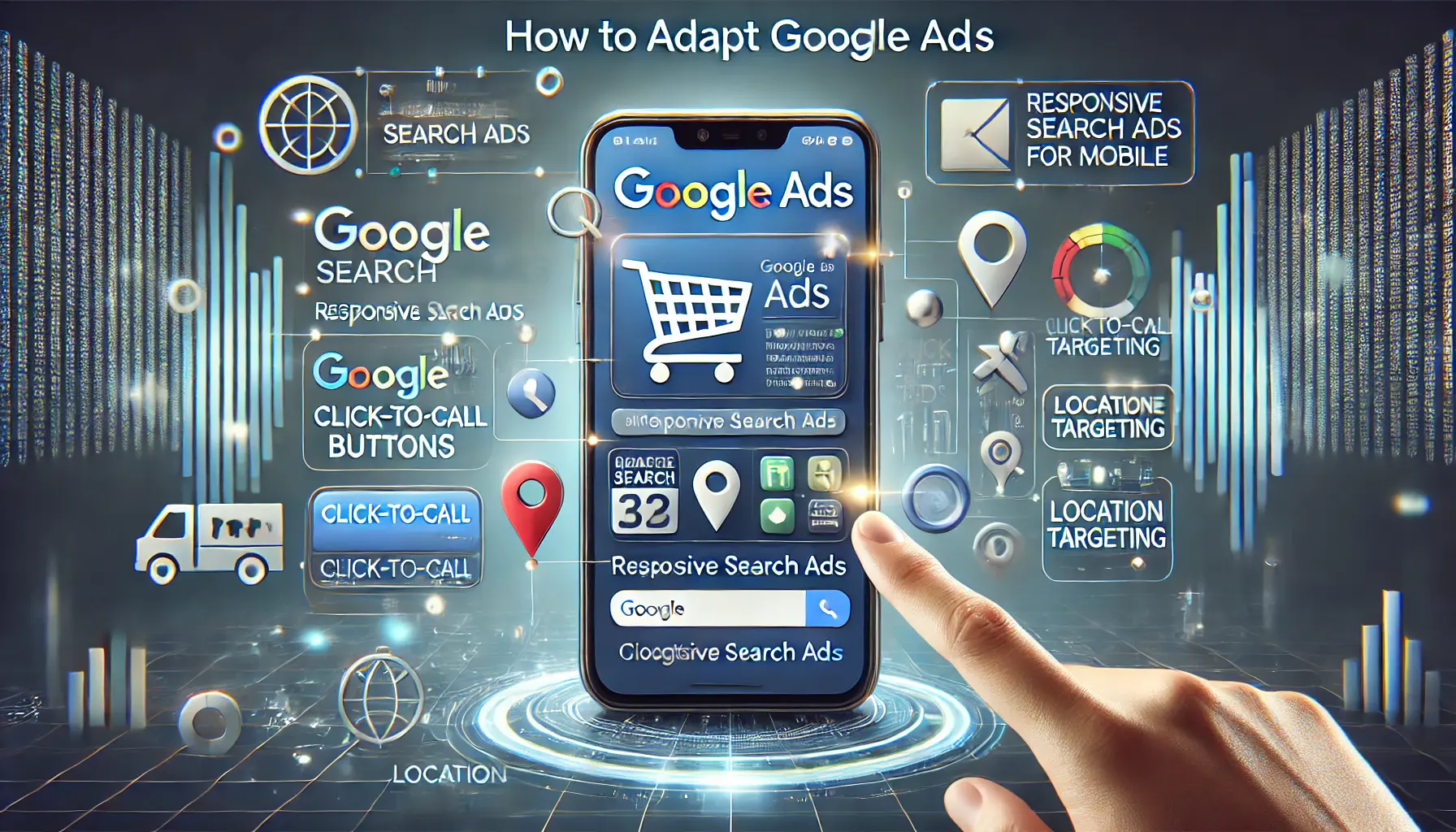
An illustration of adapting Google Ads strategies for mobile audiences.
How to Adapt Google Ads for Mobile Audiences
When designing Google Ads campaigns, it is essential to consider the mobile experience to effectively reach mobile audiences.
This includes creating ads that are visually appealing and functional on smaller screens, with clear calls to action that are easy to engage with on mobile devices.
- Leverage mobile-specific ad formats such as responsive search ads, which automatically adjust to fit different screen sizes.
- Use ad extensions like click-to-call buttons and location targeting to reach mobile users more effectively.
- Ensure landing pages are optimized for mobile browsers, with fast load times and easy navigation.
Adapting your strategy to fit Google’s mobile-first indexing approach improves user engagement, click-through rates (CTR), and conversion rates, driving better results for your business.

An illustration of key advantages of the mobile-first approach in PPC advertising.
Highlights of the Mobile-First Approach in PPC
In summary, a mobile-first approach offers several key benefits, including better visibility in search results, more relevant ad placement, and higher conversion rates.
By focusing on the mobile user experience, businesses can tap into a vast pool of potential customers who primarily use smartphones for browsing and purchasing decisions.
Additionally, Google Ads provides tools like smart bidding, which uses machine learning to automatically adjust bids for mobile users, maximizing ad spend and boosting ROIReturn on Investment, a measure of the profitability of an investment..
A mobile-first strategy ensures businesses remain competitive in the rapidly growing world of mobile search, making it a vital component of any successful digital marketing campaign.
A mobile-first strategy ensures you’re reaching a majority of your audience. Ignoring mobile means missing out on critical user interactions.
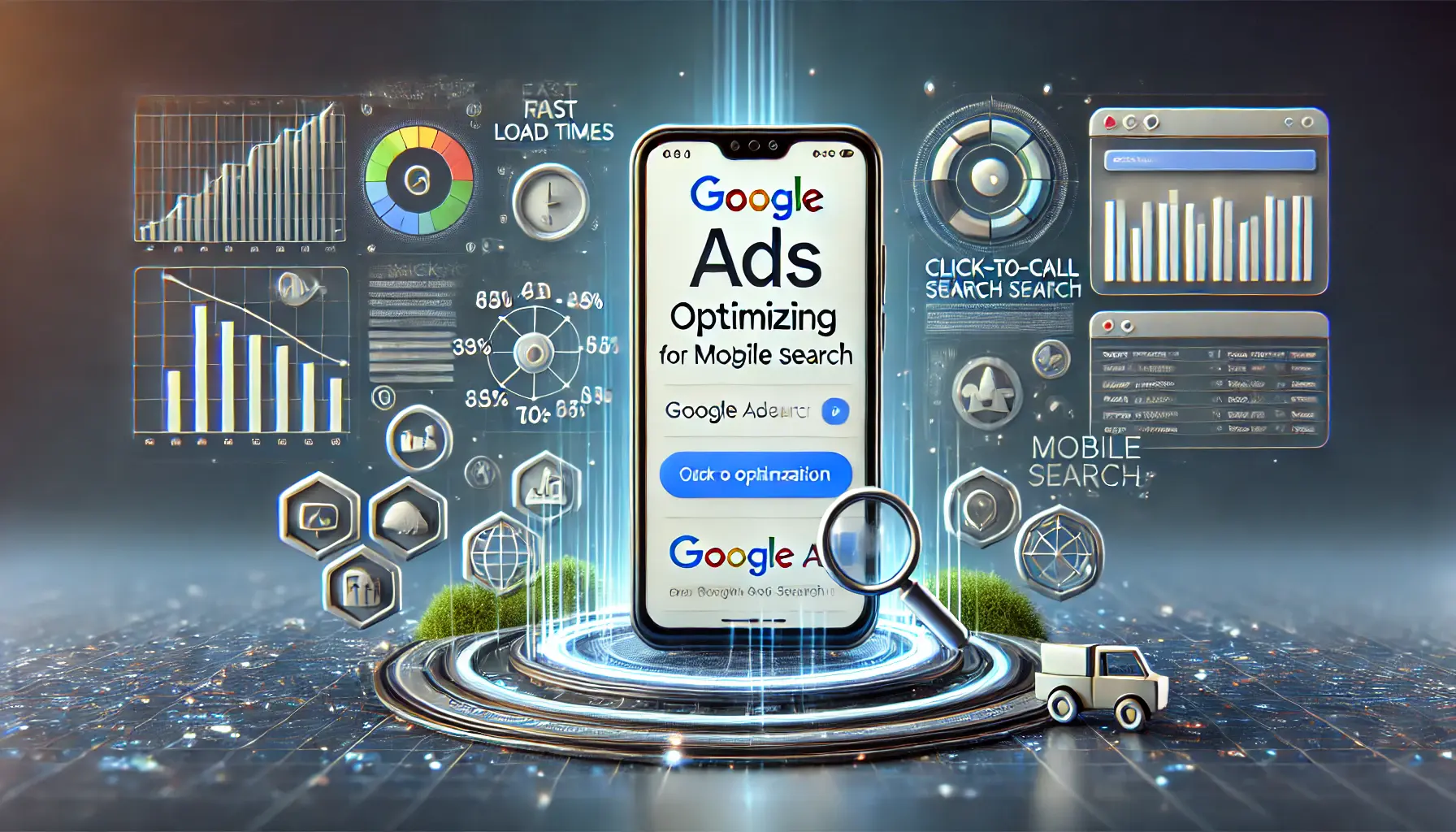
An illustration of optimizing Google Ads specifically for mobile search users.
Optimizing Google Ads for Mobile Search
As mobile search continues to grow, optimizing Google Ads appropriately for mobile will be even more critical to maximize all possibilities.
You can optimize for mobile search to ensure your ad reaches an even bigger audience and performs equally well by allowing users to interact with your ad in an unobtrusive and intuitive manner.
When done right, mobile optimization can bring added value to user interaction, click-through rate, and overall campaign performance.
As mobile users interact with ads differently than desktop users, advertisers need to shift their focus toward mobile-specific strategies to make advertising more relevant and effective.
Key factors include mobile-friendly ad formats, fast-loading landing pages, and optimized bidding for mobile, which play a critical role in competitive business concerns within the mobile-first advertising world.
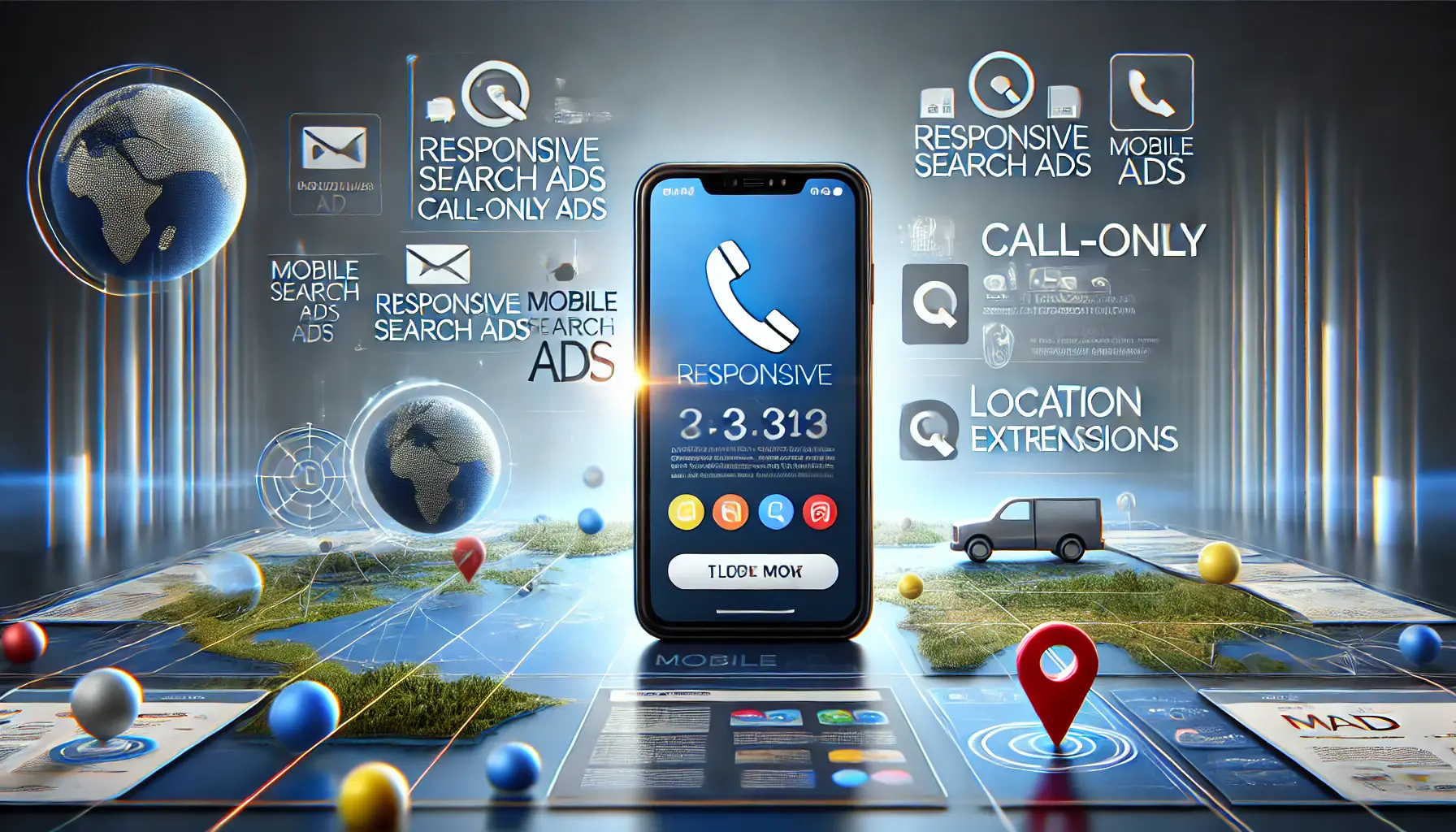
An illustration of mobile-friendly ad formats and extensions used in Google Ads.
Mobile-Friendly Ad Formats and Extensions
In Google Ads, a range of mobile-first formats serves to improve user experience on mobile.
These include responsive search ads that automatically adjust their size and layout to fit different screen sizes, as well as call-only ads, which are dedicated to driving phone calls from mobile users.
- Responsive search ads automatically adapt to various screen sizes, increasing visibility and engagement on mobile.
- Call-only ads allow users to call your business directly from the ad, making it easy for customers to contact your business on their mobile devices.
- Mobile ad extensions, such as location, call, and app extensions, increase relevance and user experience for mobile ads.
Leveraging these mobile-specific formats and extensions can greatly enhance engagement with your ads by providing users with a more personalized and actionable experience on their mobile devices.

An illustration of creating mobile-optimized landing pages for better user experience.
Creating Mobile-Optimized Landing Pages
Once users click on your ad, they should be directed to a mobile-optimized landing page that is fast, responsive, and easy to navigate.
Studies show that 53% of users abandon a site if it takes more than 3 seconds to load, making speed a crucial factor for mobile ad performance.
Google Ads rewards advertisers with higher quality scores for mobile-friendly landing pages and lower cost-per-click rates.
- Ensure your landing pages load quickly on mobile – aim for 3 seconds or less.
- Use a responsive design that adapts smoothly to different screen sizes and resolutions.
- Minimize clutter on your landing pages to improve user experience and conversion rates.
By creating mobile-friendly landing pages, you ensure that users have a seamless experience from clicking your ad to engaging with your content, directly impacting your Google Ads campaign performance.

An illustration of best practices for mobile search targeting in digital advertising.
Best Practices for Mobile Search Targeting
Maximizing ROI from your mobile ads involves incorporating targeting strategies that align with user intent and behavior on mobile.
Effective strategies include audience segmentation and device targeting in Google Ads campaigns.
This allows you to focus your ad spend on users most likely to convert via mobile.
- Use device targeting to prioritize mobile users over desktop, especially if your business sees more conversions on mobile.
- Segment your audience into personalized ads based on different user groups’ mobile search behaviors.
- Apply smart bidding, which automatically adjusts bid prices based on the likelihood of conversion from a mobile user.
Mobile search targeting enables businesses to match their Google Ads campaigns with the behaviors and preferences of mobile users, leading to higher conversion rates and more efficient ad spending.

An illustration of mobile-specific bidding strategies in digital advertising.
Mobile-Specific Bidding Strategies
Another key factor in running successful Google Ads in a mobile-first world is optimizing your bidding strategy for mobile search.
Smart bidding uses machine learning to automatically adjust bids to maximize the likelihood of conversion, making it a powerful tool for mobile advertising.
By leveraging data from previous mobile interactions, smart bidding ensures your budget is used efficiently to target high-value mobile users.
- Activate smart bidding, which automatically optimizes your bids for mobile conversions.
- Use enhanced CPC (cost-per-click) to automatically adjust your bid amount in real-time based on how likely the click will result in a conversion.
- Test device-based bid adjustments to ensure you invest in the most profitable channels.
By employing mobile-specific bidding strategies, you can maximize ROI and drive more conversions from mobile users while keeping ad spend under control.
Optimizing your Google Ads for mobile users can increase conversions and lower CPC, making it an essential step for modern marketing strategies.

An illustration of AI and automation driving mobile search ads in digital advertising.
AI and Automation: Role in Mobile Search Ads
Artificial intelligence (AIArtificial Intelligence, a field of computer science focused on creating systems that can perform tasks requiring human intelligence.) and automation continue to play an increasingly important role in optimizing mobile search ads on Google Ads.
Considering the complexity of mobile user behavior and the vast amounts of data generated from interactions on mobile, AI-driven tools have become indispensable in improving ad performance.
From smart bidding strategies to predictive analytics, AI helps advertisers simplify their campaigns and achieve better outcomes with less manual intervention.
Implementing AI and automation increases efficiency in mobile search ads for businesses, saving hours of manual optimization.
With the continuous rise of mobile search, these technologies are evolving to help companies stay competitive in a constantly changing, data-driven market.

An illustration of AI-powered solutions enhancing the optimization of mobile ads.
AI-Powered Solutions to Optimize Mobile Ads
AI technologies allow advertisers to fine-tune their mobile search ads with unprecedented precision.
Machine learning algorithms analyze user behavior, ad performance, and competitive landscapes to make automated adjustments that boost relevance and effectiveness.
- AI-driven audience segmentation enables highly personalized ad experiences for targeted groups of mobile users.
- AI algorithms automatically optimize ad copy, creative elements, and bidding for improved performance.
- Machine learning models continuously learn from real-time data to enhance ad targeting and improve conversion rates.
These AI-driven tools help advertisers make real-time modifications based on user behaviors and preferences, improving engagement and conversion rates.

An illustration of how automation streamlines and improves mobile campaign performance.
How Automation Improves Mobile Campaign Performance
Automation tools in Google Ads simplify the management of complex mobile ad campaigns, allowing advertisers to focus more on strategic decisions rather than daily tasks.
Automation ensures that campaigns remain optimized and relevant without constant manual oversight.
- Automated bidding strategies, such as Target CPA (cost-per-acquisition) and Target ROAS (return on ad spend), automatically adjust bids to achieve specific goals.
- AI generates dynamic ads based on user intent and past interactions, improving the relevance of mobile search ads.
- Automation helps manage large-scale campaigns efficiently by streamlining ad creation, bidding, and reporting processes.
Automation allows businesses to scale their mobile search ad efforts without sacrificing quality or performance.
It keeps campaigns up to date with the latest user trends, making it easier to capture new opportunities in the mobile search landscape.

An illustration of leveraging smart bidding to optimize mobile search ad performance.
Leverage Smart Bidding for Mobile Search
Smart bidding is one of the most valuable AI-driven tools for optimizing mobile search ads.
Using machine learning, it sets the right bid for every auction based on the likelihood of conversion.
Smart bidding analyzes historical performance data and real-time signals—including location, device, and time of day—to ensure advertisers get the best return on ad spend (ROI).
- Enhanced CPC (cost-per-click) automatically adjusts bids in real-time to maximize conversions.
- Target CPA optimizes bids to capture conversions at the most efficient cost-per-acquisition.
- Target ROAS allows advertisers to set a target return on ad spend, with bids adjusted to meet that target.
Smart bidding automatically adjusts your mobile search ad bids in real time, based on the predicted likelihood of conversion.
This boosts efficiency, reduces wasted effort, and helps drive better results with less work.
AI tools streamline the ad optimization process, making campaigns more efficient and targeted.

An illustration of future trends shaping mobile search and Google Ads.
Future Trends in Mobile Search and Google Ads
The world of mobile search is always in a state of flux, and businesses should stay one step ahead of emerging trends if they want to keep up with the competition in the digital advertising space.
With advances in mobile technology, Google Ads continuously evolves to ensure better reach and engagement with its target audience.
From the growing prevalence of voice searches to the potential influence of 5GThe fifth generation of mobile network technology, offering faster speeds and improved connectivity. technology, several key trends are shaping the future of mobile search ads.

An illustration of the growing impact of voice search on Google Ads strategies.
Voice Search and Its Impact on Google Ads
One of the most significant trends in mobile search is the increasing use of voice searches.
With the growing integration of virtual assistants such as Siri, Google Assistant, and Alexa into mobile devices, more people are adopting voice commands to perform searches.
This shift is changing how users interact with search engines and how advertisers approach running Google Ads campaigns.
- Voice search queries tend to be longer and more conversational, requiring advertisers to use different keywords and ad copy.
- Since voice queries are natural language-based, optimizing content to match these queries can improve relevance for voice searches.
- Leverage local SEO, as voice searches are often location-based (e.g., “find a coffee shop near me”).
By optimizing for voice search queries, businesses will be better positioned to capture this growing audience as voice search continues to increase.

An illustration of how 5G is revolutionizing mobile advertising with faster speeds and interactive ads.
The Expanding Role of 5G in Mobile Advertising
With the rollout of 5G networks, mobile internet speeds are faster than ever, fundamentally transforming how users interact with content.
This improvement is making mobile advertising even more dynamic and immersive.
For Google Ads campaigns, 5G opens up new possibilities for richer ad formats and enhanced user experiences.
- 5G enables video ads to load faster, making the video format more practical for mobile advertising.
- Higher bandwidth allows for interactive ads and augmented reality (AR) experiences, further engaging users.
- Advertisers can leverage 5G to deliver personalized ads in real-time based on user data and behavior.
In short, 5G enables firms to run more interactive and innovative mobile ad campaigns, integrating Google Ads with enhanced mobile experiences.

An illustration of the shift toward a cookie-less mobile future in digital advertising.
Getting Ready for a Cookie-Less Mobile Future
The move toward a cookie-less future, driven by privacy concerns, is reshaping the digital world.
Google has announced its plans to phase out third-party cookies on its Chrome browser, which will change how advertisers track and target users across the web, including on mobile.
- Advertisers will need to rely more on first-party data to build audience segments and personalize ads.
- Solutions such as Google’s Privacy Sandbox will help advertisers reach users while respecting their privacy choices.
- Contextual targeting will become more important in the absence of third-party cookies.
Businesses should prepare for a world without third-party cookies by realigning their Google Ads strategies, focusing on data privacy, and offering personalized ad experiences without relying on third-party cookies.
Staying ahead of future trends, like voice search and 5G, is key to keeping your business relevant in a mobile-first world.
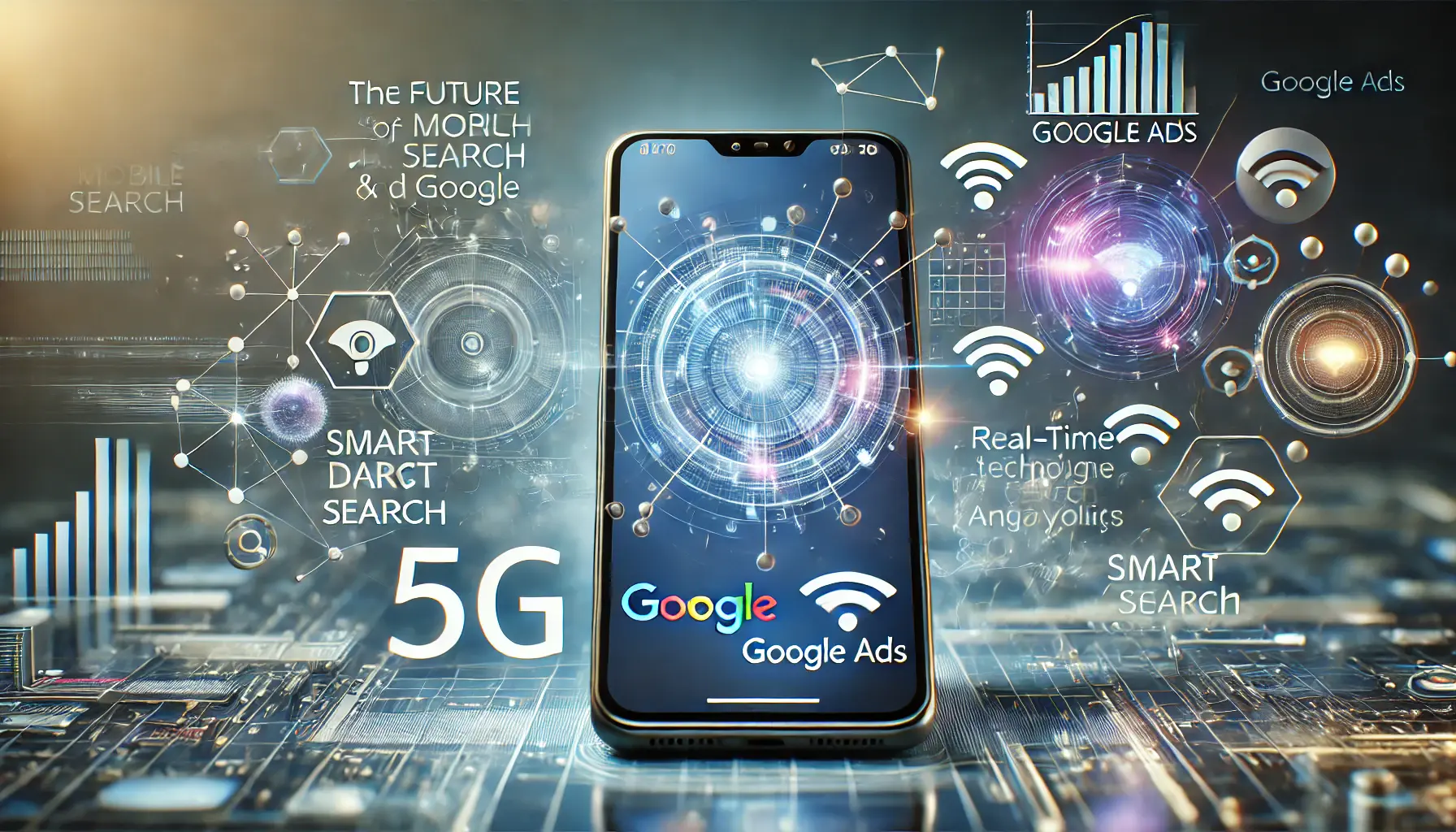
An illustration of future trends in mobile search and Google Ads, featuring advanced technologies.
Overview of Future of Mobile Search and Google Ads
With the world of mobile search in constant flux, one thing is for sure: businesses will need to adapt quickly to new trends and emerging technologies if they want to remain competitive in the evolving landscape of Google Ads.
From voice search to 5G technology, these changes not only affect how users engage with content but also how advertisers must rethink their campaign strategies to achieve better reach and engagement.
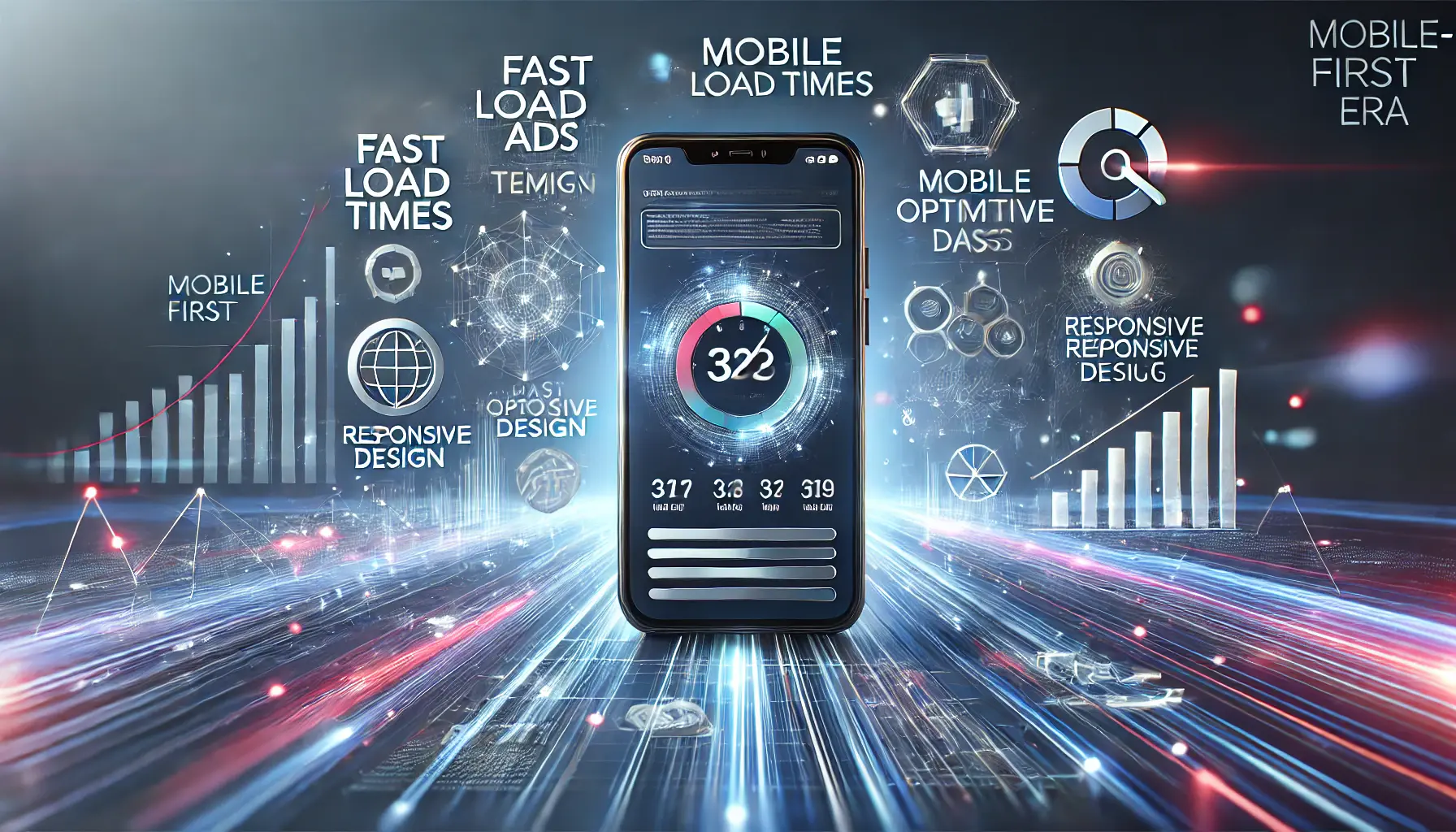
An illustration emphasizing the key aspects of adapting to the mobile-first era in search and advertising.
Key Takeaways from the Mobile-First Era
Looking at the rise of mobile search, it is clear that a mobile-first approach is not just a trend but a necessity.
This shift compels advertisers to optimize their campaigns for mobile users and ensure seamless experiences across all devices.
Key takeaways from this article include:
- Mobile searches have surpassed desktop searches, making it essential for businesses to adopt mobile-friendly practices.
- Mobile-first indexing has become the leading factor in how content is ranked and indexed, making mobile optimization crucial for success in both SEO and Google Ads.
- Responsive ads, mobile-specific extensions, and mobile-optimized landing pages significantly improve user engagement and conversion rates.

An illustration of how AI and automation are enhancing mobile search ads by optimizing performance and efficiency.
The Role of AI and Automation in Mobile Search Ads
As mobile growth adds complexity to ad campaign management, AI and automation remain critical for helping advertisers streamline their processes and achieve better results with less manual intervention.
Smart bidding and AI-driven ad optimization allow advertisers to reach the right users at the right time, improving the overall efficiency of running Google Ads campaigns.
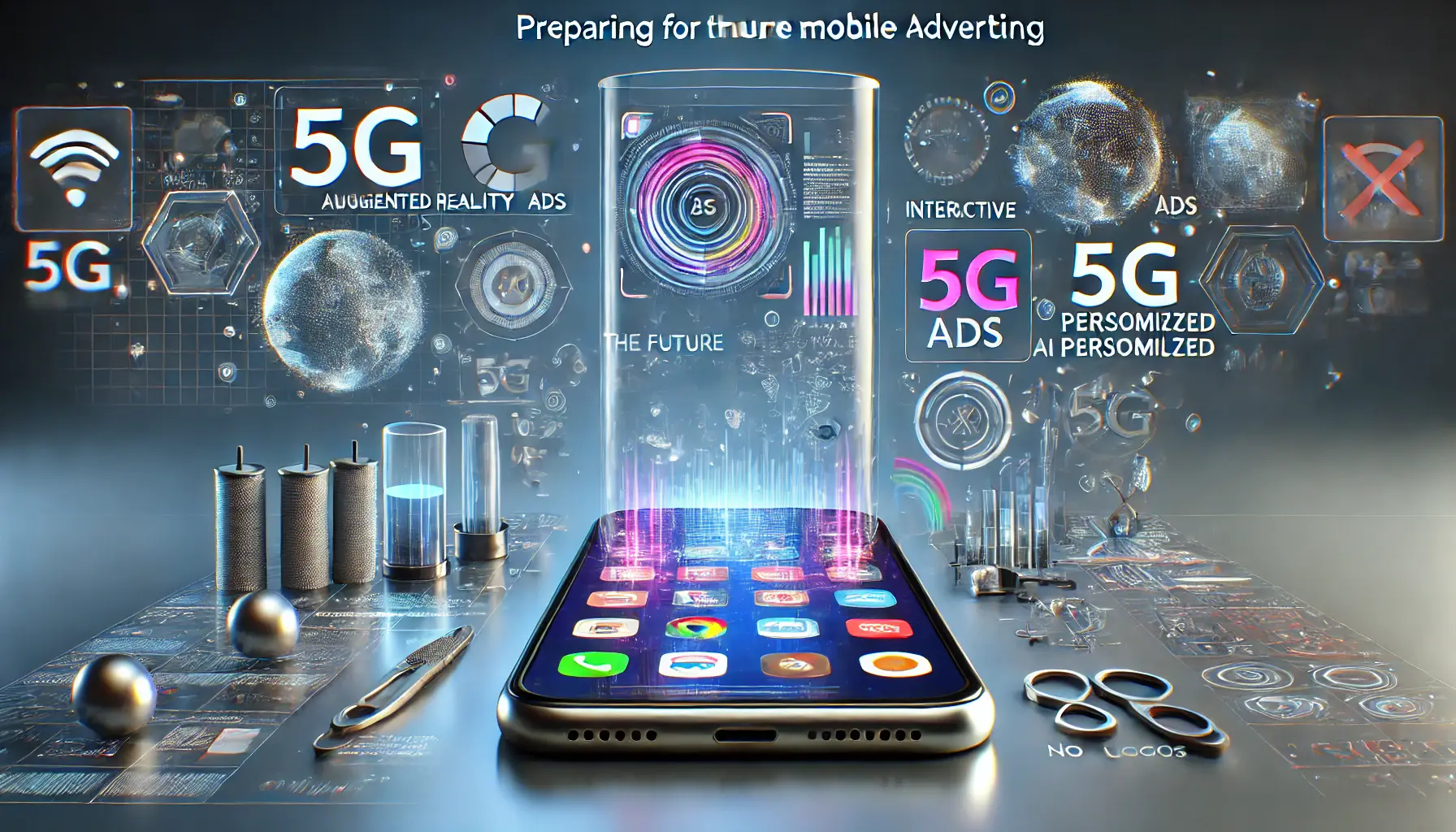
An illustration of how businesses need to prepare for the future of mobile advertising with advanced technologies.
Preparing for the Future of Mobile Advertising
Emerging trends such as the rise of voice search, the expansion of 5G networks, and the move toward a cookie-less future will shape the future of mobile advertising.
Optimizing for voice search, using 5G to unlock new capabilities, and shifting to privacy-centered advertising strategies will be key moves to keep businesses competitive in mobile search.
By integrating these trends into their Google Ads strategies, advertisers can deliver more relevant and engaging ad experiences to their mobile audiences.

An illustration providing a concluding overview of mobile search and Google Ads, with a forward-looking vision.
Final Thoughts
The future of mobile search combined with Google Ads offers numerous opportunities for businesses willing to embrace technological advancements and changing user behaviors.
From AI-powered automation to mobile-first indexing, the possibilities in digital advertising are endless, but only for advertisers prepared to adapt to emerging changes.
Staying informed on trends like voice search, 5G, and the shift toward a cookie-less world will be crucial for businesses looking to stay relevant and thrive in this ecosystem.
By embracing a holistic mobile-first approach, leveraging AI, and future-proofing their strategies, marketers can ensure that their Google Ads campaigns continue to succeed in an increasingly mobile-centric world.
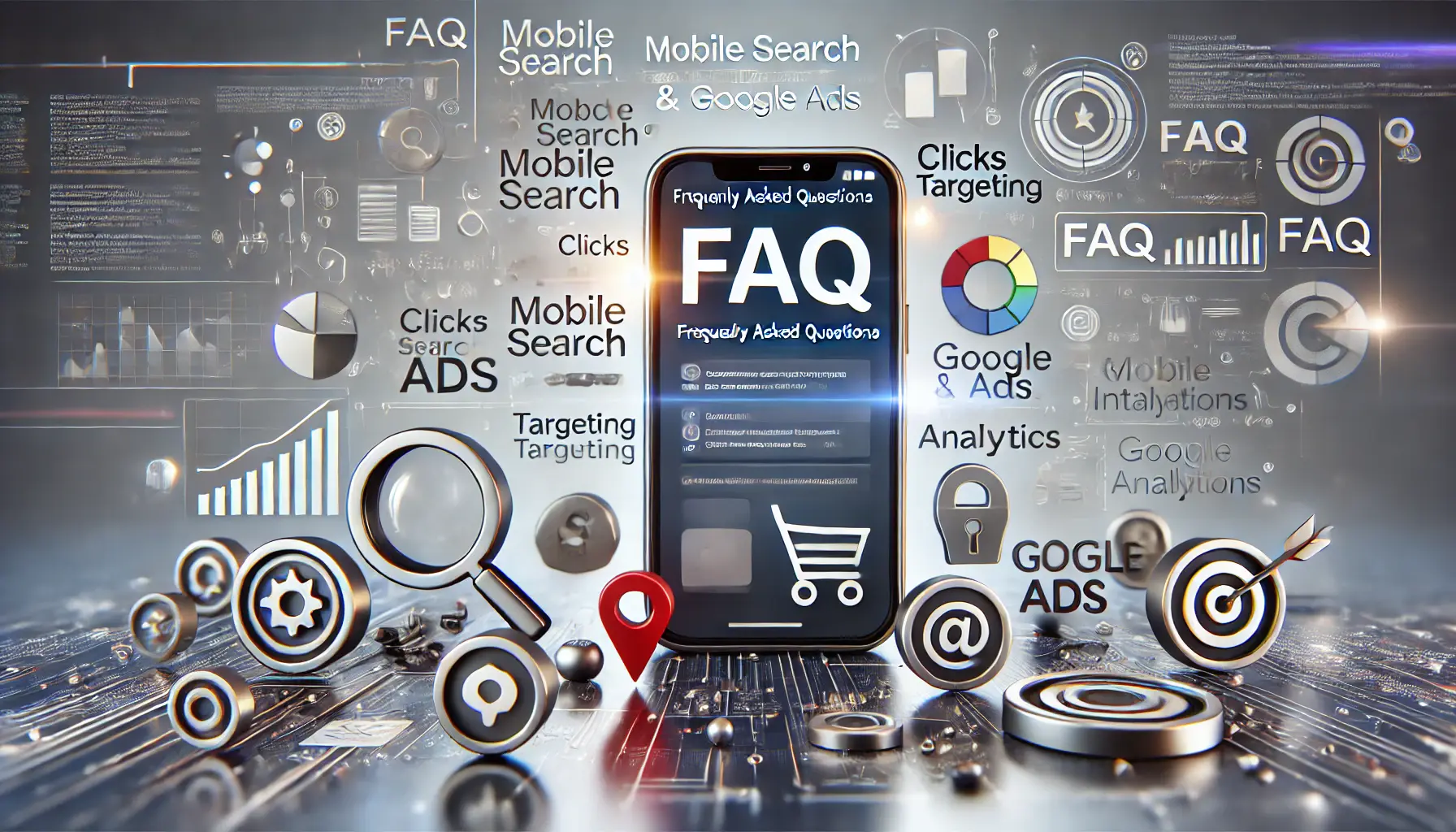
An illustration of frequently asked questions related to mobile search and Google Ads, providing informative solutions.
Your campaigns can be managed by an agency specialized in Google Ads, check out our service page.
Frequently Asked Questions About Mobile Search and Google Ads
As businesses move into the ever-evolving landscape of mobile search and Google Ads, certain questions about strategies and best practices frequently arise.
Below are answers to some of the most commonly asked questions on this topic.
Mobile-first indexing focuses on the mobile version of your site to rank and index.
To maximize Google Ads campaigns, ensure your landing page is mobile-friendly, improving ad performance and enhancing the user experience.
Voice search is gaining momentum as more users rely on virtual assistants.
Optimizing Google Ads campaigns for voice queries can improve relevance and capture a growing audience, especially for location-based searches.
AI automatically optimizes ads through smart bidding and targeting, personalizing ads more efficiently.
AI tools analyze user data to refine ad strategies, yielding better results with fewer manual adjustments.
5G brings faster internet speeds, enabling richer ad formats such as video and augmented reality.
Google Ads campaigns can utilize these advancements to create more immersive and interactive mobile ad experiences.













